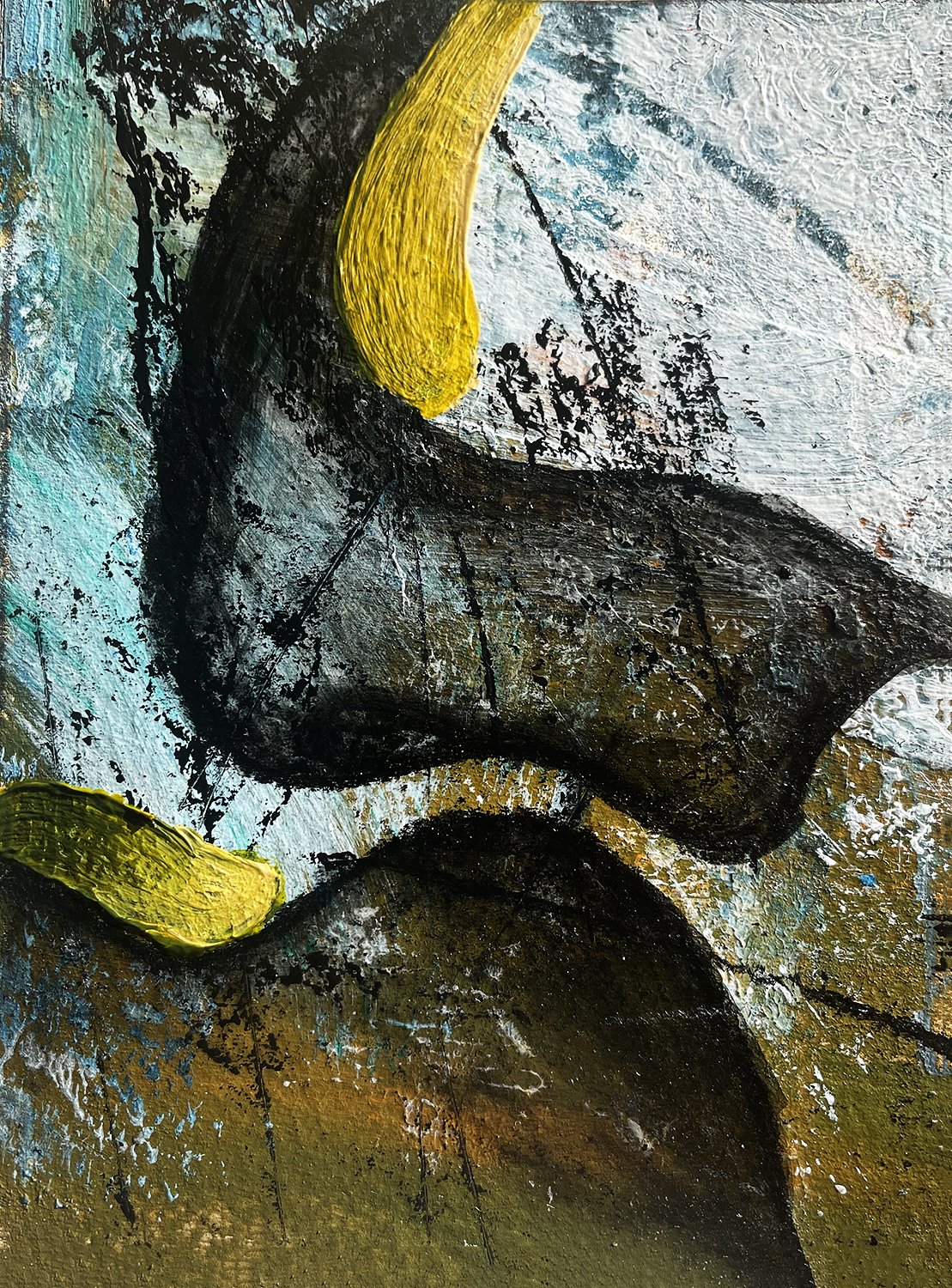These new 18" x 18" mixed-media paintings came out of the same question that drives my self-directed study work and dissertation. I’m testing that question in paint, just like I test it on glass plates and in writing. Arts-Based Research is my lab. Each surface becomes a site where memory and the urge to mean something collide. It’s going to be a large part of those courses (photography, painting, and writing).
The first canvas, Black Polka Dots, is all ground and no figure, but the body is there in the residue—look close. A diagonal band cuts across the picture like a fault line or a cauterized wound. There’s a ghosted fragment of text trapped in the layers, a reminder that language gets buried in us. The dotted texture, the black polka dots, repeats along the seam like a rash or a code.
I’m learning that terror doesn’t always show up as a scream. Sometimes it’s a pattern that won’t leave the skin. Sometimes it’s that sickly yellow and cardboard that keeps insisting on itself. In the studio I scraped, pressed, and lifted paint until the surface held both abrasion and breath. That back-and-forth is the practice. Not catharsis. Contact. I think I get it.
“Black Polka Dots,” 18” x 18” acrylic and mixed media. October 28, 2025
“Black Polka Dots (Detail),” 18” x 18” acrylic and mixed media. October 28, 2025
The second canvas, Reaching, started as a field of rusted earth. I built a ground of modeling clay and pressed textures into the wet medium and let them dry into a relief map of small violences. After the ground had a history, the figure arrived. The head tilts toward the viewer, wrapped and abraded. It isn’t a skull, but almost. It’s a person caught mid-recognition. The black marks are time-sensitive and somewhat crude on purpose. The figure is painted on vellum paper; I wanted to see if the wrinkles would stay in the figure, and I wanted the line to feel like a pulse, not a performance.
This is the “through line of rupture” I keep mapping in my research. We live with breaks we can’t fully mend, yet we still reach. Making the figure small in a vast, scarred field turns the old heroic picture on its head. The hero here isn’t conquering anything. He’s staying. He’s looking back.
“Reaching,” 18” x 18” acrylic and mixed media. October 28, 2025
“Reaching (Figure Detail),” 18” x 18” acrylic and mixed media. October 28, 2025
“Reaching (Detail),” 18” x 18” acrylic and mixed media. October 28, 2025
My dissertation asks how creative practice metabolizes death anxiety differently than everyday avoidance. These canvases are thin slices of that metabolism. They show what happens when I keep the question in the room and let materials push back. The paintings aren’t illustrations of theory. They’re tests. They either hold the charge or they don’t.
Reaching maps the moment before denial hardens. Black Polka Dots lingers in the afterimage when language slips. Together they sketch a small ethics: stay with the rupture, don’t varnish over it too quickly, and find forms that let others breathe near it.
I’m not even sure if they are finished. It doesn’t really matter if they are or not, but I may be pulled back into them at some point.
That’s the practice I’m building in my first self-directed study, and I hope to carry it over to the second self-directed study. Not to defeat fear, but to turn it into material that can hold a little meaning. If we can bear to look, we can choose how to live inside that knowledge. And maybe, if we’re lucky, we can make something honest from it.
















